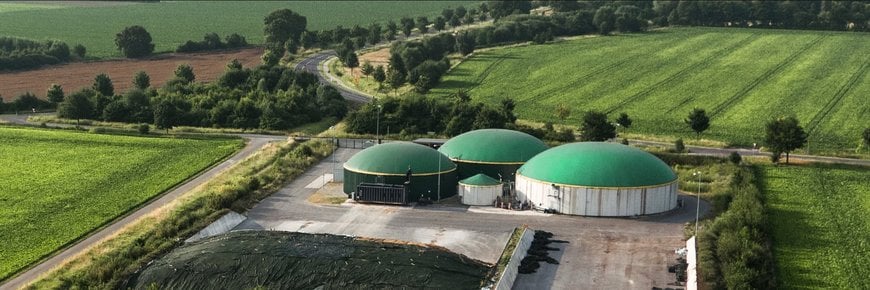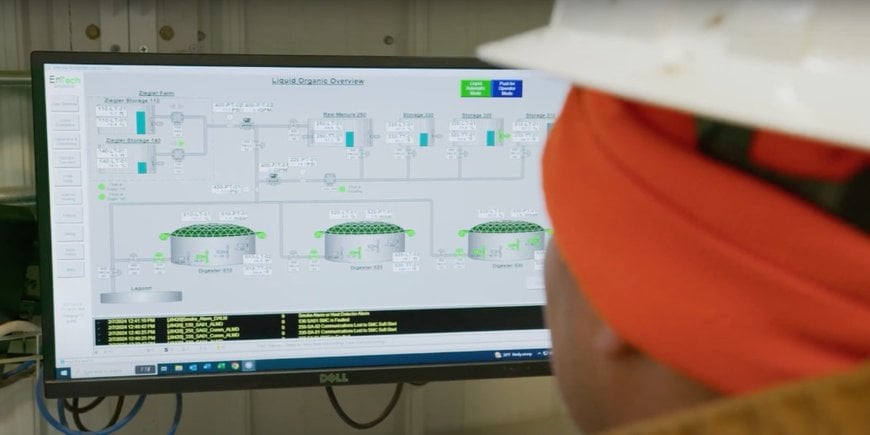www.industryemea.com
24
'24
Written on Modified on
Xylem: How mixing and pumping technologies are solving a major renewable challenge
Xylem explains how biogas producers – which include public utilities, energy companies, farms, businesses and others – must navigate a number of complex issues.
www.xylem.com

As more governments and businesses look to advance net zero, there’s growing global interest in sustainable energy sources. One renewable that’s attracting increasing attention is biogas, which is produced by reusing organic materials such as food and animal waste.
According to the World Biogas Association, the global biogas sector is expected to grow at a rate of 32% between 2023 and 2028.
While the concept of creating biogas seems straightforward, biogas producers – which include public utilities, energy companies, farms, businesses and others – must navigate a number of complex issues. Chief among those issues is the efficient management of high-density fluids.
American BioEnergy Services is one agricultural biogas producer who counts on Flygt to address their high-density fluid needs.
Mixing and pumping solutions for biogas production
Q: How is biogas produced?
Biogas is created through anaerobic digestion, a biological process where bacteria break down organic waste in the absence of oxygen. The end product is used to generate power for electricity and heat for the producer and/or businesses and homes in the community. The leftover organic material can be used as fertilizer for crops or for other purposes.
Q: What are some of the biggest fluid management challenges involved in biogas production?
In anaerobic digestion, the high percentage of solids in the feedstock can make mixing and pumping difficult. The substrates, or base materials, can range from liquid matter like manure to relatively dry materials like the by-products of food processing plants. So, the major challenge is to mix different streams in the feeding tank until an ideal percentage of dry content matter is achieved – around 8-10%.
During the later steps of the process – fermentation and storage – tank contents must be continuously mixed to prevent the floating and settling of the matter and to maintain a homogeneous blend.
The substrates are often a combination of fibrous, low-density materials and heavier materials, two extremes that need to be maintained in suspension. Because of the bulky matter, clogging is also a big challenge when pumps transport substrates between tanks.

Q: How can biogas producers tackle these challenges?
Mixers: Producers need heavy duty, reliable mixing solutions to prevent common problems that can cause costly inefficiencies. One issue is crusting, when base materials crust over on the surface, blocking the release of gas bubbles and reducing biogas output. Another common challenge is the sedimentation of base materials, which can reduce the operational volume of the tank.
Our Flygt submersible mixers help producers address these issues fast and effectively. The mixers are mounted on a guide bar that can be moved up or down in the tank to prevent crust formation on the surface or sedimentation at the bottom. Our submersible mixers are also easy to remove for more efficient servicing or replacement without emptying the tank.
Pumps: High-density feedstocks can lead to frequent clogging, so it’s important for biogas producers to choose pumps that can pass and chop bulky materials when transporting substrates between tanks. This helps to ensure a reliable, consistent feed.
Non-clog pumps – like the N and F series from Flygt, a Xylem brand – are perfect for fibrous substrates, while lower velocity pumps from Lowara, a Xylem brand, are ideal to handle thinner liquids like wastewater or condensate.
Q: How can asset managers minimize operational costs?
It’s important to consider the total cost of ownership (TCO) of biogas projects. Premium equipment comes with a higher price tag, but by investing in high-quality products, asset managers can avoid breakages, optimize their gas yield, and achieve the highest possible thrust-to-power ratio to reduce energy consumption.
By taking a TCO approach to biogas and keeping on top of maintenance with connected IoT technologies, biogas producers can maximize the longevity and efficiency of their assets, optimize their performance and build their bottom-line – while advancing global net zero goals.
www.xylem.com

